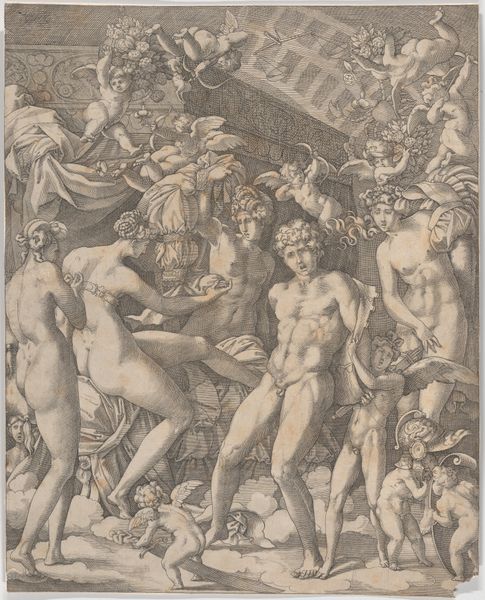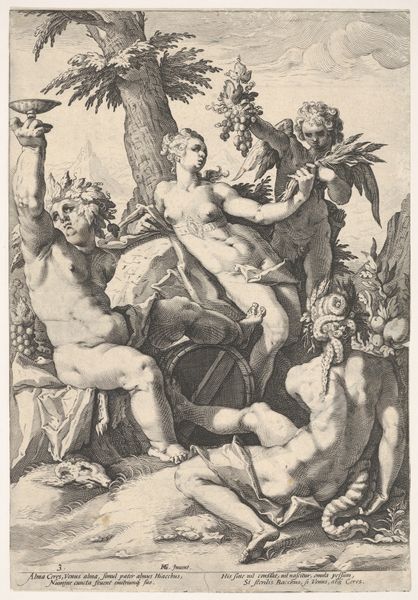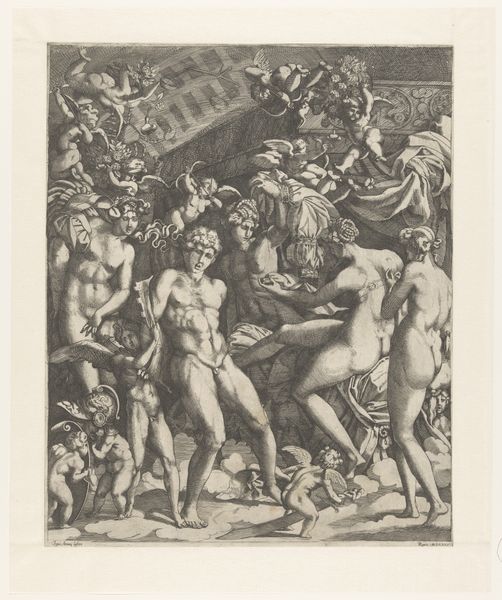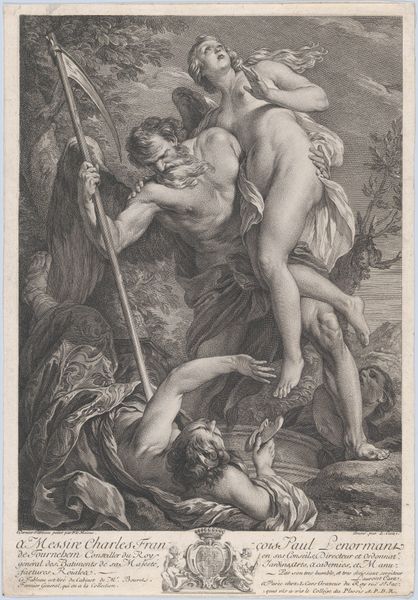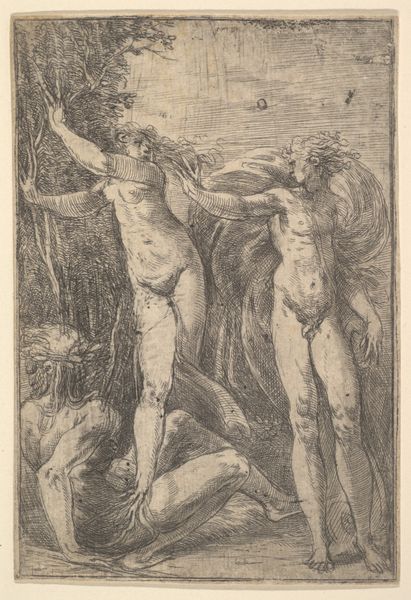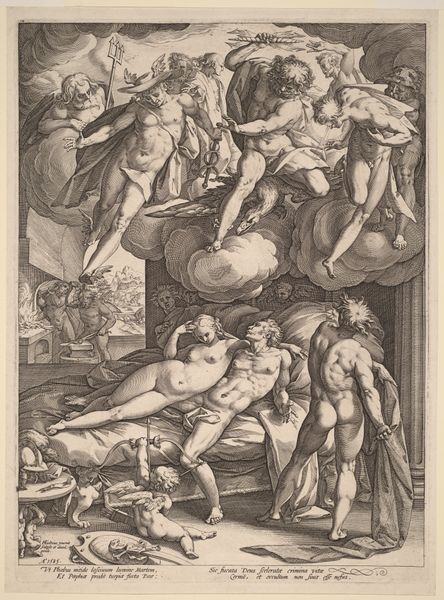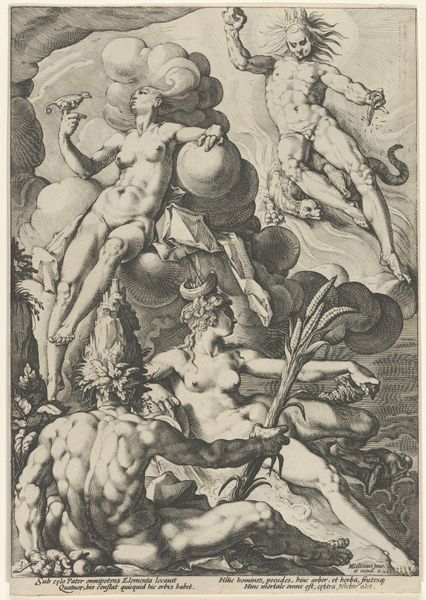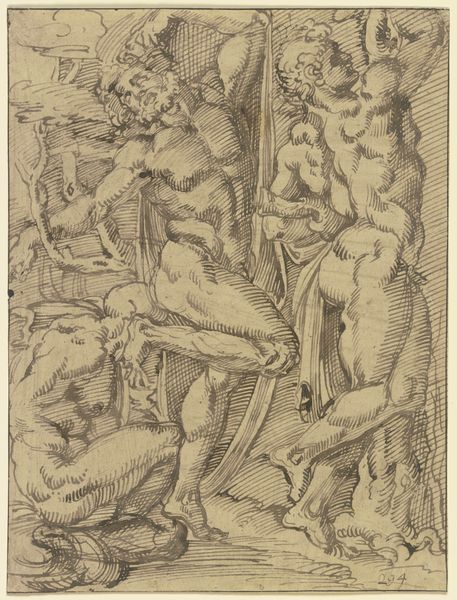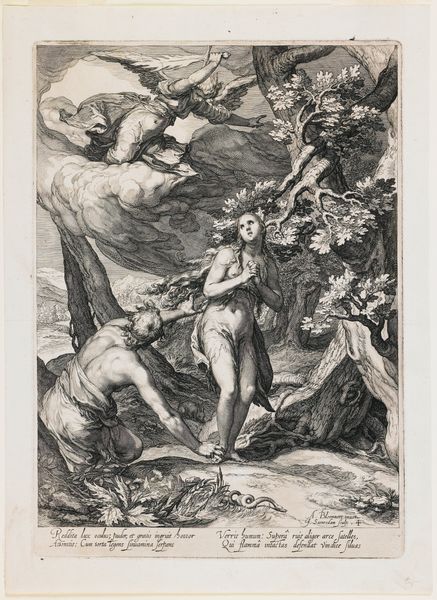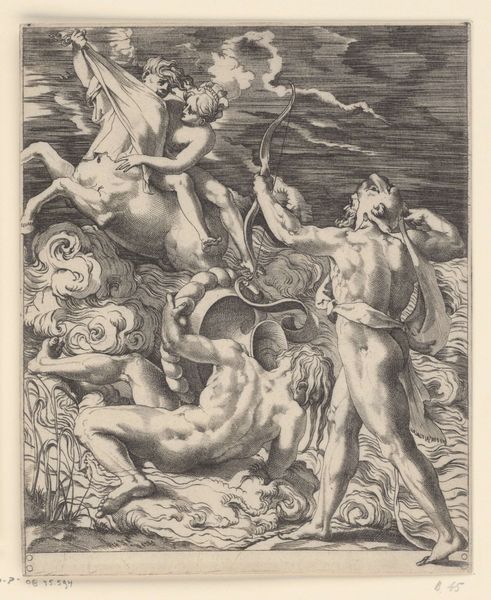
Dimensions: height 302 mm, width 211 mm
Copyright: Rijks Museum: Open Domain
Jacob Matham created this print, "The Five Senses," around 1600 in the Netherlands, using engraving. It depicts five nude figures, each representing one of the senses. Nudity in art during this period carried different connotations. It alluded to classical antiquity, with its focus on the human form and philosophical inquiries into human nature and the world. This print reflects the Northern Renaissance interest in allegories and the symbolic representation of abstract concepts. The choice of representing the senses through nude figures aligns with the era's fascination with the body as a site of knowledge. To truly understand this work, one must consider the historical, social, and intellectual environment in which it was produced. For instance, consulting emblem books and philosophical treatises from the period can shed light on the meanings attached to the senses. Approaching art history with this kind of contextual sensitivity brings us closer to understanding its complex cultural significance.
Comments
No comments
Be the first to comment and join the conversation on the ultimate creative platform.

